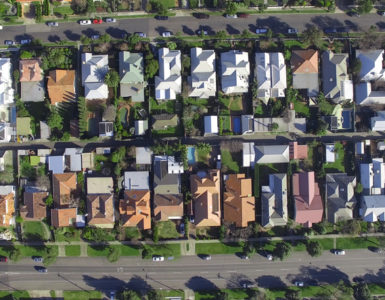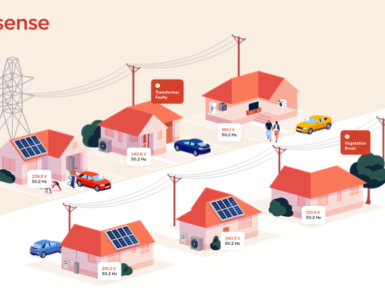
Michael Jary, Managing Director EMEA and APAC for Sense.
It’s no secret that the UK’s smart meter rollout has been challenging. With the original 2019 deadline passed, the latest figure for smart meter penetration stands at 57%. Recognising that smart meters are integral to the UK’s energy transition, The Energy Act 2023, which became law in October, lays out new powers to deliver the smart meter rollout by 2028. The government claims this could generate total bill savings to households of £5.6 billion.
Heralded as ‘the largest piece of energy legislation in a generation’, it solidifies the government’s commitment to smart metering.
However, October’s House of Commons Committee of Public Accounts outlined a number of issues with the rollout including consumer perception of smart meters and the performance of the technology itself. With legally binding net zero targets to meet, the pressure is on to smooth the rollout’s stumbling blocks.
The rollout is progressing slowly because consumers are sceptical of the benefits and energy savings have been marginal. This is connected to issues with the technology itself. With a foundation of solid technology, issues with consumer confidence and engagement can be addressed and the true benefits of smart metering realised.
Future-proofing smart meter technology for real-time impact
In 2011, when the UK began its smart meter rollout, households were fitted with first-generation SMETS1 smart meters. However, these lower-spec meters and their successor, SMETS2, have not met original expectations. As identified in the Committee of Public Accounts report, around 3 million of the smart meters installed so far are not functioning properly. And, when 2G and 3G communications networks are closed another approx. 7 million will lose functionality.
As a result, the Accounts Committee recommends measures to ensure that suppliers use future-proofed technology. However, as suppliers and manufacturers work on the next generation of smart meters, what does that future-proofed smart meter technology look like?
Crucially, the next generation of smart meters must deliver tangible benefits to users. The first wave of meters failed to deliver on their promise, mainly because smart meters were not very smart. They were limited by the technologies available at the time. As a result, many consumers remain sceptical about the direct benefits of smart meters, as the potential cost savings and energy efficiency gains have not been realised.
Successful smart meter adoption relies on actively engaging consumers and encouraging their interaction with the data and insights the meters provide. For example, lower-spec traditional meters lack the real-time, detailed experience necessary to effectively impact household energy consumption.
Previous generation smart meters rely on 15-minute interval data, which can be delayed up to 24 hours before consumers access it. In-home devices can provide real-time consumption but without detailed, real-time insights into second-by-second appliance usage, smart meters can’t provide the information needed to reduce energy use.
Unsurprisingly, energy providers have struggled to engage consumers using existing smart meters because the benefits are not clear enough to them. Moreover, with the increasing use of smart devices like electric vehicles, heat pumps, and solar panels it is now even more vital to deliver true, smart insights, in real-time.
This is where next-gen, AI-enabled smart meters are essential. Unlike traditional smart meters that were constrained by the technology of their time, now advanced AI and machine learning can integrate with smart meters to offer Real-Time Load Disaggregation (RTLD). This advanced AI technology analyses energy consumption at up to one million samples per second. It can identify which household appliances are on or off in real-time, monitoring the entire home and individual appliances.
This true real-time monitoring not only benefits the consumer but also provides valuable insights and tools for energy operators and retailers. For example, suppliers can manage demand effectively by leveraging real-time intelligence at the grid edge. Such insight is essential for energy flexibility initiatives such as Demand Response (DR) programmes.
Correctly specifying smart meters is integral to energy flexibility
As the UK strives to achieve net zero emissions, effective domestic demand response (DR) is essential. The role of DR in the UK’s energy flexibility strategy has never been more crucial. Energy suppliers and grid operators who can manage peak consumption will reduce costs and reward consumers.
National Grid ESO, Octopus, and British Gas have all engaged in smaller-scale demand response programmes, proving popular with engaged consumers. However, encouraging sustained and active participation with a larger spread of consumers can only be achieved if it is easy; the customer experience must be seamless and the benefits, tangible.
At the recent Energy UK annual conference, DR was a key topic, with discussion on the need to get customers more engaged in how we shift energy use in a way that shows them the value of doing so. This is especially relevant for younger and lower-income groups, where digitisation and the opening up of data is seen as central to engaging people in the energy transition.
Successful Demand Response programmes actively engage consumers. They provide support as well as incentives. In fact, done well they provide added value, solidifying the relationship between consumer and retailer.
For DR programmes to be successful, they must be cost-efficient, scalable, and effective. It works where providers and households are in real-time communication and where consumers have access to real-time, actionable insights on electricity use. This is why real-time load disaggregation (RTLD) and grid edge intelligence is so important to the future of the energy transition.
For example, a household using a next-generation smart meter equipped with this technology can receive a notification via an app to shift the use of their washing machine or dryer to a different time when energy prices are lower or the grid is less congested. The notification is based on what appliances they have running at that exact moment. Without this capability, when homes are asked to shift load, an average of just 2-4% of peak consumption is typical. In contrast, in homes equipped with these AI technologies, this soars to 18%. They are given suggestions on the precise appliances they should consider turning down, removing any guesswork.
When DR programmes are delivered with this personalised approach consumers become engaged and empowered. With specific appliance level guidance, consumers are more likely to participate in a demand response event and because they turn off the right energy-intensive appliances, they contribute more load too. Too many consumers become disillusioned with demand response events because they have turned off their low-energy lights or computer consoles, disrupted their lives, and are then disappointed to see how little load they have shifted. It is vitally important for the UK that demand response events don’t lose consumer trust.
The AI-led approach to demand response is much lower cost and therefore more scalable than other asset-heavy approaches. Because the marginal cost of software is so much lower, it is approx. 60 times more cost-effective than home batteries. It can be practically rolled out to millions of homes, allowing far more load under control. In this way, smart meters become integral to household energy experiences and energy retailers become trusted partners, providing added value through personalised advice.
It’s time the UK leads the charge
When appropriately specified, AI-ready smart meters have the potential to achieve myriad benefits – from lower bills, reduced energy consumption, and grid optimisation. In North America, AI-ready next-gen smart meters are being specified, with five million scheduled to be rolled out to households in the near future as a starting point.
Energy retailers are hungry for innovation, consumers are desperate for tangible results. The UK must meet its net zero obligations and our energy system must transform. Correctly specifying next-generation grid-edge technologies is foundational to these challenges. With the latest UK legislation refocusing efforts on smart metering, it’s time the UK leads the charge in designing and delivering truly future-proofed smart meter technologies.







